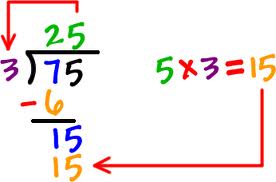C Thread Safe and Reentrant Function Examples.
Given enough stack space this is a perfectly valid - though tough to debug - way to write code. Since a recursive function calls itself, clearly it must be reentrant to avoid trashing its variables. So all recursive functions must be reentrant! but not all reentrant functions are recursive. Reference.
Reentrant code can be safely re-entered, meaning that it can be called again even while a call to it is underway. Reentrant code keeps its state entirely in parameters and local variables, and doesn’t use static variables or global variables, and doesn’t share aliases to mutable objects with other parts of the program, or other calls to itself.

In case of Reentrant mode, the InstanceContext is unlocked just before the service makes an outgoing call thereby allowing the subsequent call, (which can be reentrant as demonstrated in the sample) to get the lock next time it comes in to the service. To demonstrate the behavior, the sample shows how a client and service can send messages.

Acquires the write lock if it is not held by another thread within the given waiting time and the current thread has not been Interrupt(). Portions of this page are modifications based on work created and shared by the Android Open Source Project and used according to terms described in the.

What are Reentrant Locks?. An intrinsic locking mechanism is a clean approach in terms of writing code, and is pretty good for most of the use-cases. So why do we need the additional feature of.

Acquires the write lock only if it is not held by another thread at the time of invocation. Acquires the write lock if neither the read nor write lock are held by another thread and returns immediately with the value true, setting the write lock hold count to one.Even when this lock has been set to use a fair ordering policy, a call to tryLock() will immediately acquire the lock if it is.

Must not call non-reentrant computer programs or routines. How is safely defined? If a program can be safely executed concurrently, does it always mean that it is reentrant? What exactly is the common thread between the six points mentioned that I should keep in mind while checking my code for reentrant capabilities? Also.

If you are not using interrupts and you are using a pre-emptive OS (RTOS) then you need to learn about mutexes in order to write reentrant code. I presume the Newlib reent struct needs to be provided with a pointer to a mutex or something that you must provide for your OS. The other lazy option is to disable interrupts around reentrant code but this will lead to disaster if the code takes any.

Non-reentrant readers are not allowed until all write locks held by the writing thread have been released. Additionally, a writer can acquire the read lock, but not vice-versa. Among other applications, reentrancy can be useful when write locks are held during calls or callbacks to methods that perform reads under read locks. If a reader tries.

Given a halfway decent CPU it's not too hard to write reentrant code from scratch (decent stack resources are the biggest requirement), but I've found that it is almost impossible to make a big impure program reentrant. Generally these are monsters that relay on heaps of global variables.

Observe that if a thread tries to acquire the lock on a standard mutex that it already possesses that can cause a deadlock. Learn that a reentrant or recursive mutex can be locked multiple times by the same thread. Recognize potential use cases for a reentrant lock and mutex.

General Programming Concepts: Writing and Debugging Programs Writing Reentrant and Thread-Safe Code. In single-threaded processes there is only one flow of control. The code executed by these processes thus need not to be reentrant or thread-safe. In multi-threaded programs, the same functions and the same resources may be accessed concurrently.

Learn parallel programming basics - (Instructor) In Java, there are three classes that implement the lock interface, a basic reentrant lock and two types of reentrant read write locks for reading.



